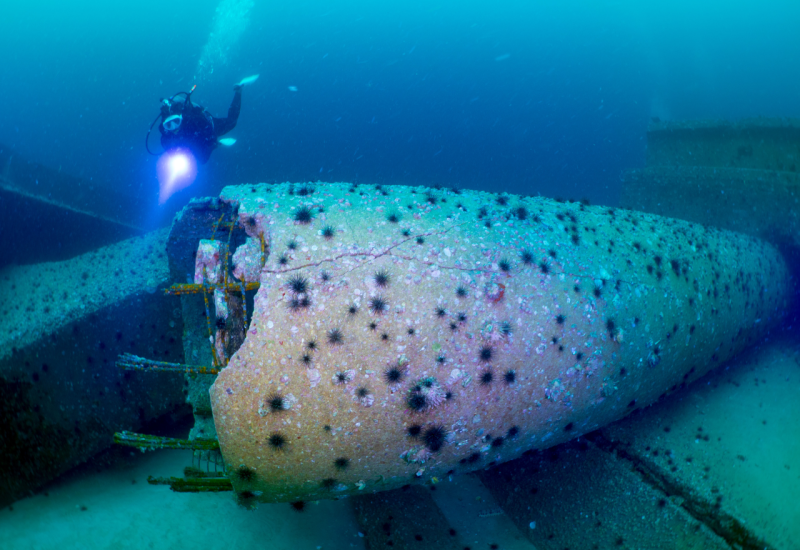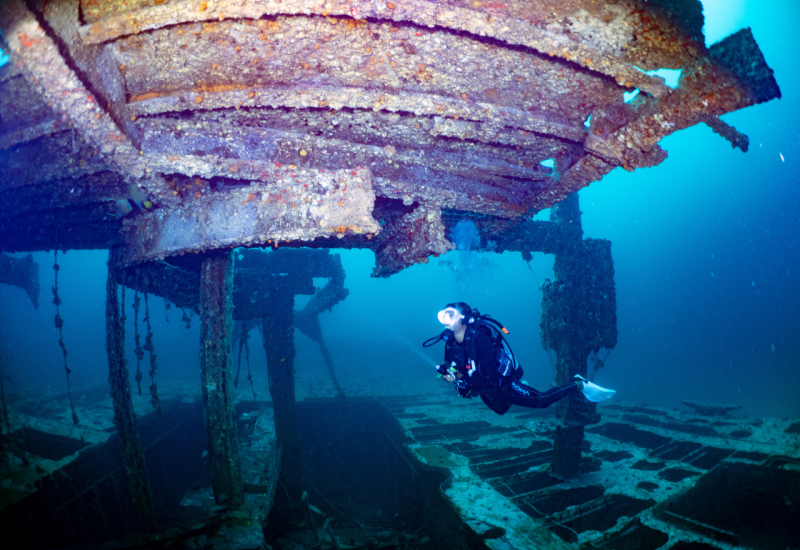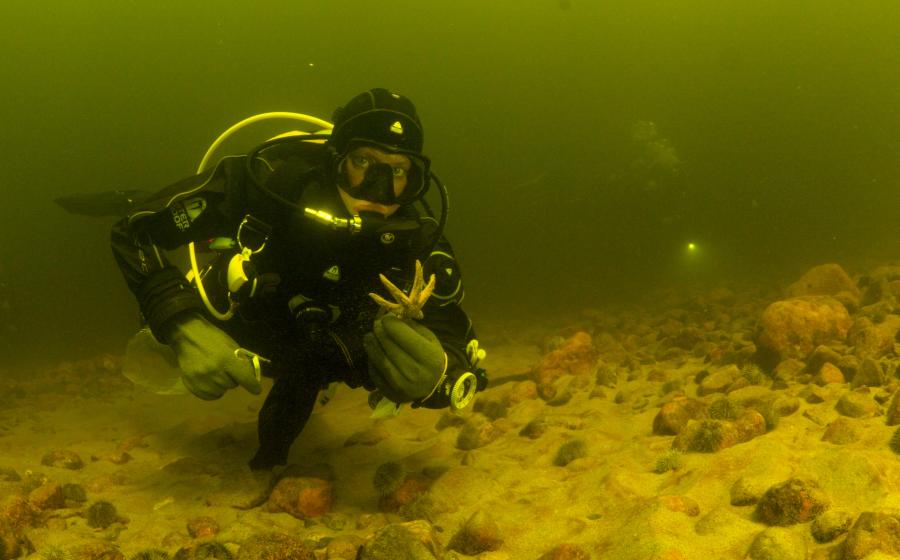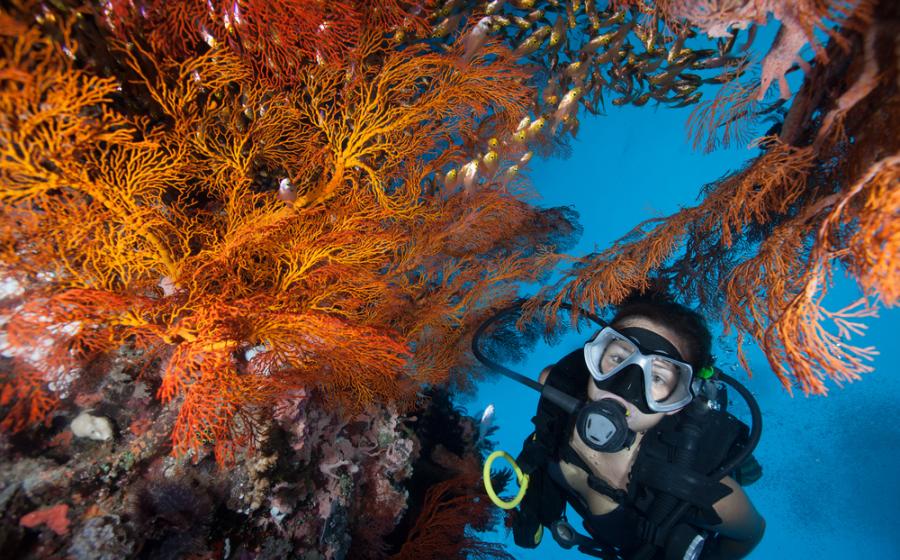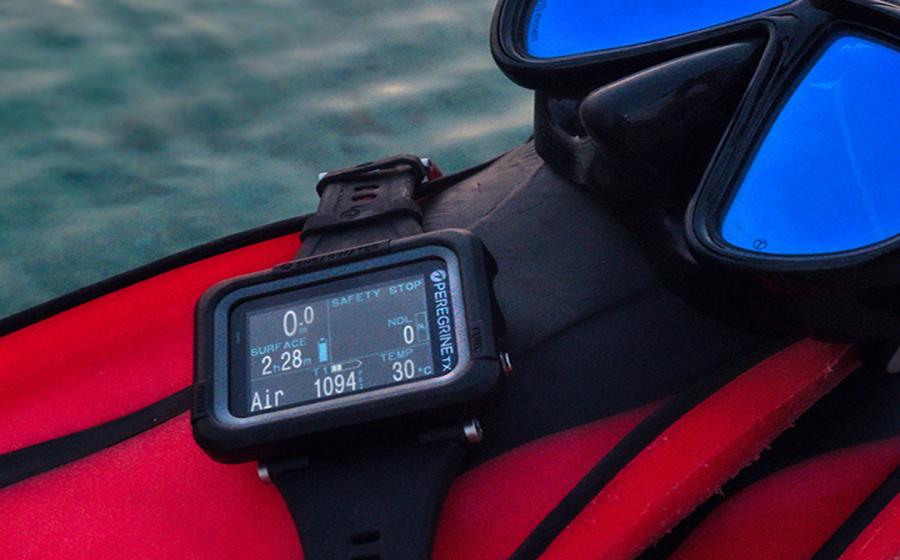Diving in Dye in Florida's Freshwater Springs
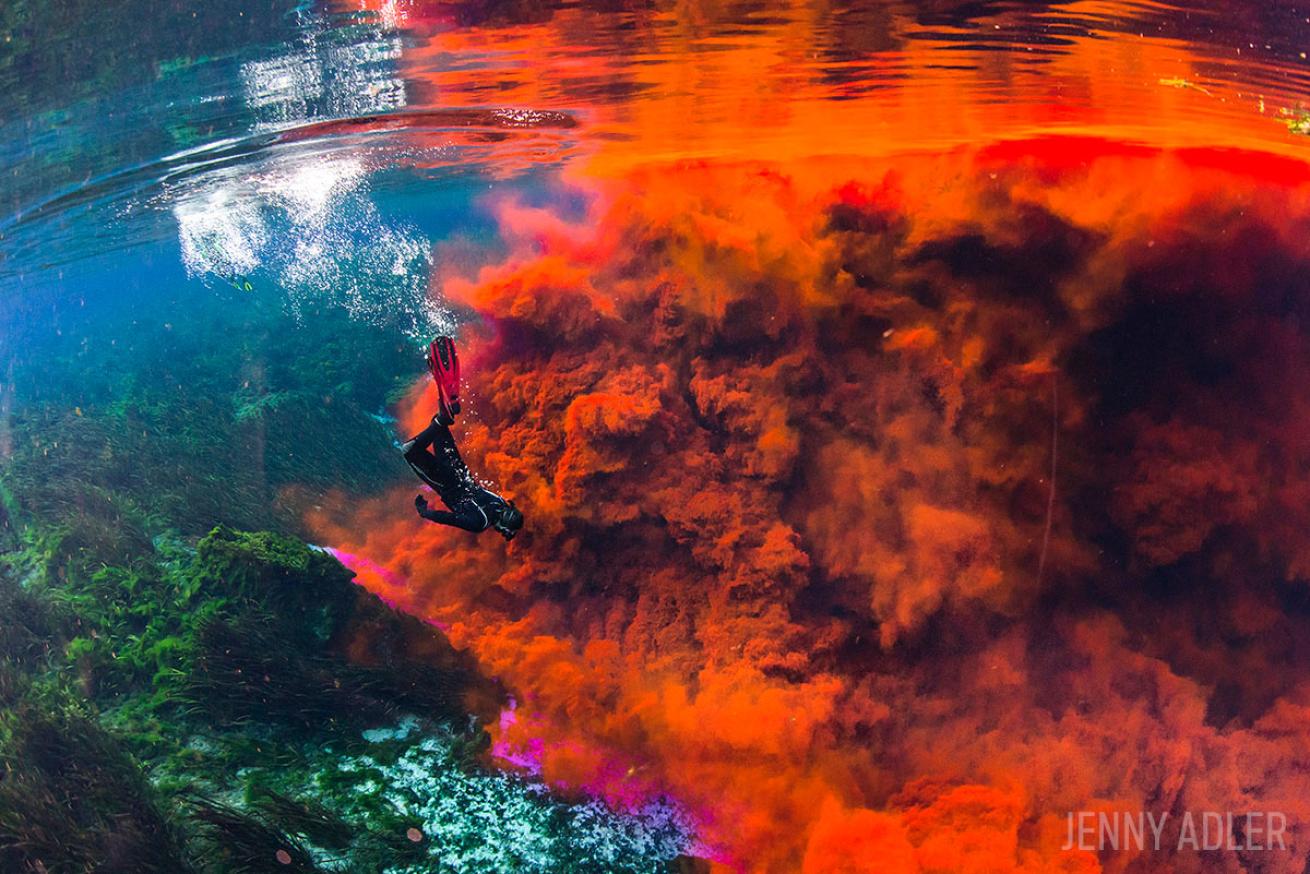
Jenny AdlerPhD candidate and hydrologist Nathan Reaver dives into a cloud of rhodamine WT dye in Silver Spring during a study he conducted in December.
Thin white beams from our headlamps dance around the platform surrounding Silver Spring as we attempt to pull on our wetsuits in the dark. Stars are still bright as a team of researchers docks our boat in the spring basin. Some of them have slept for an hour, maybe two.
We jump into the water and I am immediately awake — either because of the cool water seeping through my wetsuit zipper or my suddenly hyper alert state as I swim through eel grass while scanning for sleepy gators that might be awaiting a morning snack. The scientists lower a blue hose into the spring, and a plume of fluorescent water tracing dye erupts as the sun begins to rise. Here, Nathan Reaver, one of the sleep deprived scientists and leader of the study, dives into the cloud of dye (called Rhodamine WT).
In less than a minute, the entire basin will take on an orange hue. Reaver and about a half-dozen other graduate students, scientific divers, volunteers and his fellow lab mates in Dr. David Kaplan’s Watershed Ecology Lab at the University of Florida have a long day ahead of them — they will follow the dye, using devices called fluorometers to measure its concentration as it flows downstream.
This work can help us better understand how water moves and mixes, and calculate the amount of time it spends in the river channel after it emerges from the aquifer, which supplies drinking water to more than 90 percent of Floridians.

